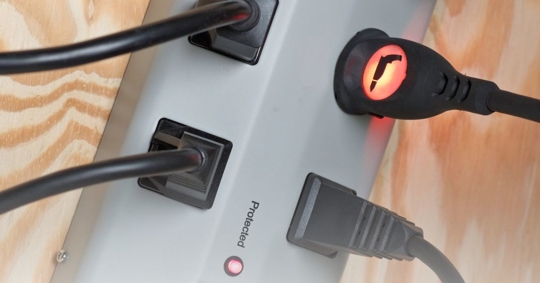Power surges are a common occurrence that can cause significant damage to your electronic devices. That's why you need a surge protector, an appliance that helps protect your equipment from these potentially damaging spikes.
What Causes Power Surges?
Power surges occur when your home loses power and re-energizes. This can happen for a number of reasons, including lightning storms or an electrical short in your house or neighborhood. Power spikes are similar to power surges but occur when electricity is restored to your home.
What Is A Surge Protector?
A surge protector is a device that protects electronic devices from voltage spikes. These spikes can come from many sources, including lightning strikes, power outages, and electrical malfunctions. The level of protection provided by a surge protector is measured by its joule rating, which measures the maximum amount of energy it will absorb before it fails to function.
A typical home or office is at risk for damage caused by these high-voltage surges because they travel along the same circuit breaker you use to power lights and appliances when there are problems with your electricity service.
When this happens, an unprotected device may get fried while plugged into an outlet—but if you have a surge protector in place (and keep it up-to-date), that won't happen because its job is to divert excess voltage away from sensitive electronics before their safety mechanisms kick in and shut them down!
The most effective type of surge protector uses metal oxide varistors (MOVs) as their primary protection component; however, other types offer different levels of protection based on how many joules they can absorb before failing (this number varies between models).
How Does A Surge Protector Work?
A surge protector is a device that protects your electronics from the effects of voltage surges, whether they’re caused by lightning or something less dramatic. When a surge occurs, the MOVs in the surge protector absorb any excess electricity so that it can’t reach your devices.
A typical power strip has one or more outlets and an on/off switch on its faceplate for turning off or on all of its outlets at once. Inside is a metal oxide varistor (MOV), which is connected to a fuse. If too much voltage passes through one wire in the cord coming from your wall socket, this MOV will trip that fuse and cut off power to all devices connected to it until you reset the circuit breaker or turn off at the wall socket itself.
What Surge Protector Should I Get?
There are several types of surge protectors, the most important being whole home surge protectors and service entrance surge protectors. These surge protectors can be installed by our electricians and should be in your home as they protect your electrical system from sudden surges.
However, you can give yourself peace of mind with an outlet surge protector receptacle that commonly comes in power strips for multiple devices. Ensure that the power strip is a surge protector, as some power strips sold simply off more outlet space but are not necessarily surge protectors.
All Electric Services is here to help keep your home safe from power surges when you call today at (407) 890-7782

